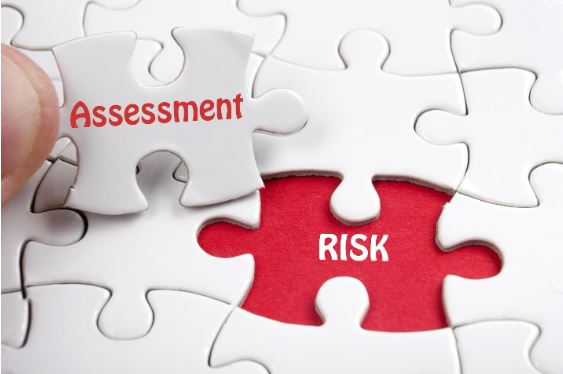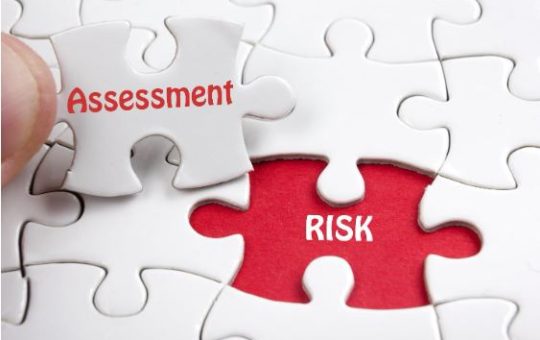
Risk Assessment Level-1
Course Overview
The Risk Assessment Level-1 course introduces participants to the fundamental concepts of identifying, evaluating, and mitigating workplace risks. Designed for individuals with limited or no prior experience in risk management, this course emphasizes a proactive approach to workplace safety. Participants will learn to recognize hazards, assess risks, and implement basic control measures to ensure a safe working environment.
Benefits
- Foundation in Risk Management: Build a solid understanding of risk assessment basics.
- Enhanced Workplace Safety: Contribute to a safer and healthier working environment.
- Compliance with Standards: Meet legal and organizational safety requirements.
- Career Development: Gain a recognized certification to support career growth in safety and health management.
- Improved Confidence: Develop the ability to identify hazards and mitigate risks effectively.
Learning Outcomes
Upon completing the course, participants will be able to:
- Understand the importance of risk assessment in workplace safety.
- Identify common workplace hazards and their potential consequences.
- Conduct basic risk assessments using simple tools and templates.
- Implement control measures to minimize identified risks.
- Communicate findings and recommendations to relevant stakeholders.
Study Units
Unit 1: Introduction to Risk Assessment
- What is risk assessment, and why is it important?
- Key terms: hazard, risk, likelihood, and severity.
- Legal and organizational requirements for risk assessment.
Unit 2: Identifying Hazards
- Common workplace hazards (e.g., physical, chemical, biological, ergonomic).
- Techniques for hazard identification: checklists, observations, and feedback.
Unit 3: Assessing Risks
- Evaluating the likelihood and severity of risks.
- Simple risk matrices and scoring methods.
- Prioritizing risks for control measures.
Unit 4: Implementing Control Measures
- The hierarchy of controls: elimination, substitution, engineering controls, administrative controls, and PPE.
- Selecting appropriate controls based on risk levels.
Unit 5: Reporting and Monitoring
- Documenting risk assessments effectively.
- Communicating findings to supervisors and teams.
- Reviewing and updating risk assessments regularly.
Career Progression
Completing the Risk Assessment Level-1 course opens pathways to:
- Safety Representative: Begin a role in supporting workplace safety initiatives.
- Health and Safety Assistant: Assist in maintaining compliance with safety regulations.
- Further Training: Progress to advanced courses like Risk Assessment Level-2 or Occupational Health and Safety Management.
- Specialized Safety Roles: Explore opportunities in specific industries such as construction, manufacturing, or healthcare safety.
This course is ideal for new safety professionals, team leaders, or anyone responsible for identifying and managing risks in their workplace.
Our assessment process is designed to ensure every learner achieves the required level of knowledge, skills, and understanding outlined in each course unit.
Purpose of Assessment
Assessment helps measure how well a learner has met the learning outcomes. It ensures consistency, quality, and fairness across all learners.
What Learners Need to Do
Learners must provide clear evidence that shows they have met all the learning outcomes and assessment criteria for each unit. This evidence can take different forms depending on the course and type of learning.
Types of Acceptable Evidence
Assignments, reports, or projects
Worksheets or written tasks
Portfolios of practical work
Answers to oral or written questions
Test or exam papers
Understanding the Structure
Learning outcomes explain what learners should know, understand, or be able to do.
Assessment criteria set the standard learners must meet to achieve each learning outcome.
Assessment Guidelines
All assessment must be authentic, current, and relevant to the unit.
Evidence must match each assessment criterion clearly.
Plagiarism or copied work is not accepted.
All learners must complete assessments within the given timelines.
Where applicable, assessments may be reviewed or verified by internal or external quality assurers.
Full learning outcomes and assessment criteria for each qualification are available from page 8 of the course handbook.
Top Courses
No results found.
Related Courses
Let's Get in touch
Deleting Course Review
Course Access
This course is password protected. To access it please enter your password below:


